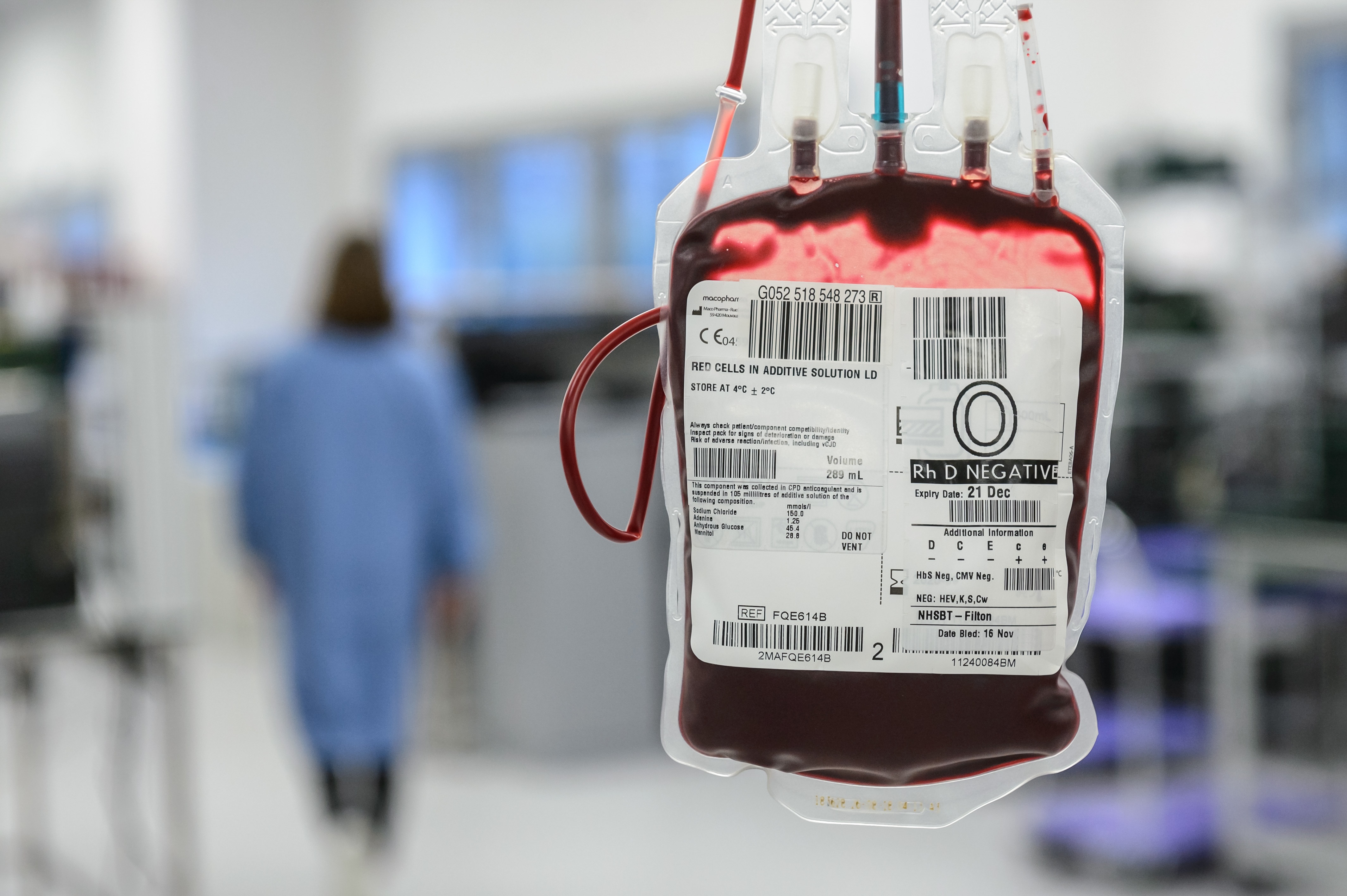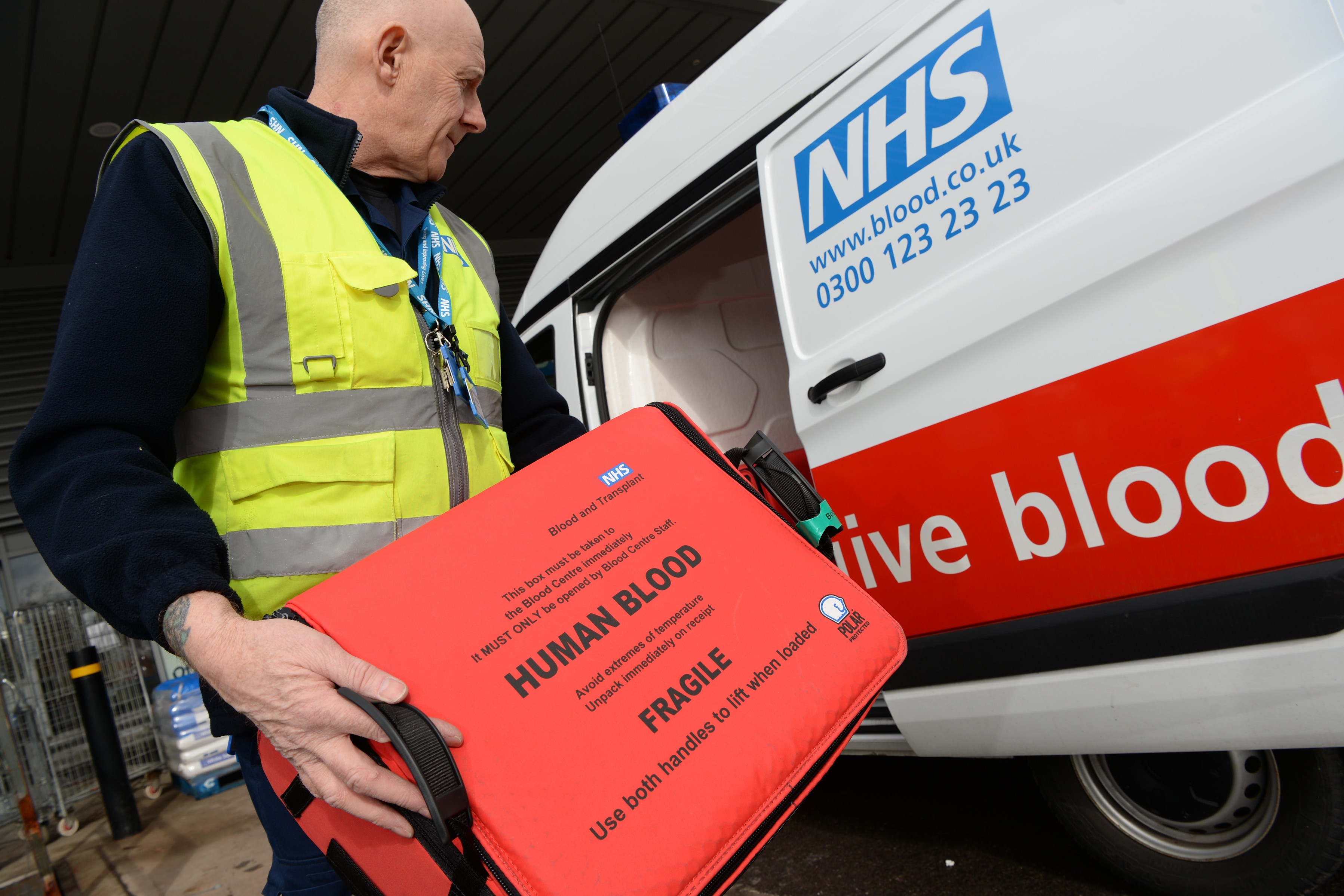The journey of blood – testing, testing, testing!
You’ve given blood. Now, what happens to it next?
When you give blood, we take a little extra for testing. It goes into sample tubes and both the donation and the tubes are labelled with the same unique donation number to link them together. Donations are then manufactured into different blood components whilst the samples undergo tests at our sites around the country.
What do we test for?
We always need to determine your blood group, screen for any antibodies in your plasma and test your donation for syphilis, hepatitis B, C and E, HIV and HTLV. We may also check for malaria, T-cruzi, West Nile Virus and Cytomegalovirus. Tests are carried out using various analysers and a variety of scientific techniques.
Platelet donations are stored between 20 and 24 °C – temperatures at which any bacteria present can thrive. So during manufacturing we test all our platelet donations to be certain that they are free from bacteria and don’t present any risk to the patient.

We also select some donations, such as O negative blood type, for extra tests. This blood can be used as a source of more specialist components for transfusion to certain patients: new born babies and infants up to one year old, patients with sickle cell disease or thalassaemia, and patients that have developed specific antibodies.
Standard testing is completed on day one after your donation, but if additional tests are required, they are generally completed by day two. All tests are done to be sure that donated blood is as safe as it can be, to help save and improve the life of the recipient.
Find more information about the tests we carry out.
Always read the label
After testing, the results are uploaded electronically to a system called PULSE. The results are linked to all the blood components that have been manufactured. These components are now ready to be labelled by the Validation department.
Once the test results are with PULSE, labels for the blood components are printed. The Validation department scans the barcodes on the labels, together with the individual donation number on the blood component, to ensure that the correct label is attached to the correct component.
After the final label is applied, the components are stored at the correct temperature, ready for issue to hospitals.
Most components are ready for issue by day three.
How do hospitals request components?
Hospital transfusion laboratories request blood and components using an online blood ordering system (OBOS). Hospital staff will respond to requests from the hospital wards for components and are highly trained to understand what their patients need. The request is automatically routed to the hospital services department of the local blood centre.

How does NHS Blood and Transplant fulfil the request?
Our Hospital Services staff review the request and determine which component they need to issue.
Staff generally issue components using a ‘first in, first out’ policy to ensure good stock management, and secure supply for all hospitals. However, hospitals may request specific blood characteristics or components at a specific age, depending on the needs of the patient. For example, ‘maximum age seven days from donation’.
You can find out more about labelling and the hospital services department in the NHSBT Hospital Services video.
Which components are in high demand?
Although all blood groups and components are needed by hospitals, the components in the highest demand are O negative red cells, A negative platelets and AB fresh frozen plasma units. These are used for patients in an emergency. They are ‘universal’ and could be transfused safely where the patient's blood group is unknown. We also need more Ro subtype blood donors whose blood is used to help treat people with sickle cell disease. With only around two per cent of donors having Ro blood, it is difficult to meet hospital demand.
We would like to say a huge thank you to all donors. Without you, we will not be able to provide hospitals and patients with the blood and components they need every day!
On the road
 Using 220 liveried vehicles, driven by 250 drivers working in shifts 24 hours a day, seven days a week, NHS Blood and Transplant’s Logistics Department transports everything from blood to biscuits between centres, team bases, session venues, hospitals and research laboratories, all over England.
Using 220 liveried vehicles, driven by 250 drivers working in shifts 24 hours a day, seven days a week, NHS Blood and Transplant’s Logistics Department transports everything from blood to biscuits between centres, team bases, session venues, hospitals and research laboratories, all over England.

